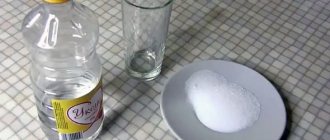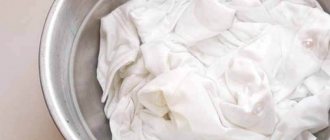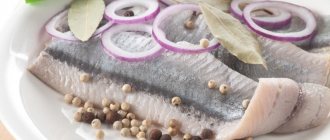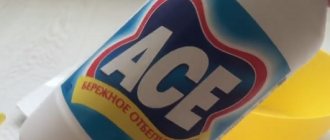Washing tulle requires certain knowledge and skills. To make transparent fabric snow-white without harming it, you can use salt.
With her help, our great-grandmothers and grandmothers washed tulle, since getting any bleaching agent in those days was problematic.
Nowadays, salt is rarely used as a cleaning agent, although it helps to carefully and efficiently remove most contaminants.
How to wash tulle with salt in a washing machine and by hand so that it is white? Details are in the article.
Why does tulle turn yellow?
Over time, tulle acquires an unpleasant yellow tint under the influence of the following external factors:
- direct sunlight;
- grease and soot from the kitchen;
- tobacco smoke;
- proximity of heating radiators;
- washing powder residues due to insufficient rinsing;
- particles of exhaust gases penetrating from the street;
- dust remaining before soaking;
- washing (for example, when using too hot water for synthetics).
To maintain the whiteness of tulle or return it to its original appearance, regular and proper washing with bleaching agents is required.
Factory-made bleaches
Modern industry provides a variety of whitening products. Based on their composition, they are divided into chlorine-containing, oxygen-containing and optical.
Chlorine-containing preparations include Belizna, Vanish, Nanny, ACE. It is not advisable to abuse them. They are suitable for one-time use. Repeated use leads to increased yellowness and rapid wear of the fabric. After “Whiteness”, tulle may no longer react to softer bleaches.
Oxygen-containing preparations are suitable for bleaching nylon tulle. The active ingredient is hydrogen peroxide. The most popular liquid bleaches are BOS, Lavadia White, and Cashmere.
Optical brighteners contain microparticles of luminescent dyes. After use, dye particles settle on the fibers of the fabric. This gives the impression of snow-whiteness. Here you can highlight “Irgafos 168 FF”, OV-1, CBS-X, QUANTEX.
Features of tulle from different materials
Tulle is made from different materials. Moreover, washing and bleaching modes are different for each variety.
- Cotton, linen. Natural tulle can be washed at high temperatures, soaked and even boiled. All types of bleaches are allowed.
- Capron. This tulle is very durable and has a special airiness. For bleaching, you can use baking soda, rock salt and citric acid. Do not use chlorine-containing bleaches. Machine washable.
- Nylon. This type of curtain cannot be bleached with products containing chlorine and other active substances. The best option is baking soda and laundry soap.
- Organza is a mixed fabric made of silk and polyester (or viscose). You can bleach it using baking soda, ammonia and hydrogen peroxide.
- Chiffon. It can be natural (silk, cotton), artificial (viscose), synthetic (polyester, polyamide) or mixed. Based on the composition (can be checked on the label), bleaching agents are chosen.
- Silk. Requires delicate handling. You can use baking soda, hydrogen peroxide and ammonia.
- Jacquard. Jacquard tulle is made mainly from polyester. Therefore, it must be bleached like polyester - without chlorine. It is acceptable to use soda and laundry soap.
- Veil. Most often, cotton and polyester are used to make it. In rare cases, silk thread is added. As a bleach you can use: soda, salt, citric acid, starch, brilliant green and blue.
- Kiseya. For muslin curtains, a detergent is selected depending on the material from which they are made. But soda is universal, and therefore suitable for this type of tulle.
Attention! Silk items are bleached after washing.
Attention! The calcined variety (sodium carbonate) can only be used to bleach pure cotton or linen curtains. For all other species, take food.
What is soda ash.
Soaking tulle in saline solution
The use of table salt as a bleaching agent for window curtains is still relevant today. The advantages of this substance are obvious:
- there is no need to look for and buy salt in advance, since it is available in every kitchen and in every home;
- the cost of table salt is an order of magnitude lower than the price of even the cheapest bleach;
- You can bleach tulle with salt quickly and without much effort;
- salt does not cause allergies, so it is even suitable for washing tulle for a children's room.
If after washing with a regular detergent the tulle does not seem snow-white enough, then you can immediately soak it in a saline solution. To prepare it, you will need 5 liters of slightly warm water, in which you need to stir 4 tablespoons of salt. The tulle is placed in the solution for 15 minutes, after which it is removed and allowed to drain.
There is no need to rinse the curtain with clean water after soaking.
Table of temperature conditions for washing tulle from different materials
| Fabric type | Temperature, °C | Recommendations |
| Organza | 30–35 | Hand wash preferred. If in the car, use delicate mode. Do not squeeze. Do not rub during washing |
| Polyester | 45–60 | In the washing machine (standard mode) or by hand |
| Veil | no more than 30 | Manually or use delicate mode |
| Capron | up to 45 | In the car in standard mode |
| Kiseya | 30–35 | Wash only in the cover. Do not squeeze. Hang and straighten to dry. Hang it on the window when damp. |
Washing tulle with salt in the washing machine
If there is no time for soaking, and a large amount of dust and dirt has accumulated on the tulle, then you have to wash it in a machine. And in this case, table salt also comes to the rescue. A tablespoon of this product is poured into the powder compartment and 1 packet of baking powder is added.
The tulle is shaken from dust, carefully rolled up and placed in the drum of the washing machine. The curtain is washed in a gentle wash mode with a water temperature of no more than 30° C. It is better to refuse spinning or set the minimum number of revolutions, which should not exceed 400 rpm.
Tulle bleaching recipes
You can bleach tulle while soaking, during washing and immediately after it (for silk products).
Soak
This is the easiest way.
- Pour water into the basin (its temperature should correspond to the type of fabric).
- Pour baking soda into it. For tulle with a normal level of soiling, half a pack is enough, for heavy soiling - 2/3.
- Stir the baking soda until completely dissolved.
- Put some tulle there.
- Leave to soak for several hours to a day.
- Wash using your preferred method - by hand or in the washing machine.
Sometimes, after soaking with soda, you don’t even need to wash it. Just rinse and dry the curtains.
With laundry soap
To enhance the effect, you can add laundry soap to the previous recipe.
- Before putting the tulle in the basin, wet it with warm water and rub it thoroughly with laundry soap.
- Dip into a container of baking soda and leave to soak.
- After soaking, machine wash or simply rinse.
Boiling
If heavily soiled, linen or cotton tulle can be boiled. You can do this in a machine, setting the temperature to maximum, or the old fashioned way - in a large saucepan:
- Fill the container with water so that there is room for the prepared items.
- Grate the laundry soap.
- Dilute soap and soda in water at the rate of 1 glass of each product per 5 liters of water.
- Let the water boil.
- Wait for the soap and baking soda to dissolve. To speed up the process, constantly stir the liquid with a long wooden stick (if you still have special wooden tongs from Soviet times, use them).
- Gently place the curtains into the pan, but do not compact them.
- Bring to a boil and keep on fire for 40 minutes to 2 hours.
- Stir occasionally, immersing all parts of the curtains in the solution.
- After turning off, leave the textile to cool in the pan.
- Rinse thoroughly, changing the water several times (you can use a double rinse in your machine).
With soda and salt together
Table salt has a bleaching effect due to the chlorine it contains. Therefore, you should not use it for washing and soaking fabrics that cannot tolerate this substance. In other cases, it enhances the effect of soda.
Components:
- 7 liters of boiling water;
- 180 g washing powder;
- 200 g salt;
- 2 tsp. soda
Mode of application:
- Pour the mixture into boiling water, stir.
- Cool the solution to the permissible temperature.
- Place the tulle in this water and leave for 5-6 hours.
- Rinse or (if you are not satisfied with the result) wash in the washing machine.
Soda and vinegar at the same time
Vinegar works well on greasy stains. In addition, its mixture with soda gives the effect of oxygen-containing bleach. But the recipe is applicable only for natural fabrics.
- To soak the tulle, use slightly warm water.
- Dilute baking soda (1/2 pack) and a glass of 6% vinegar in it.
- Leave for several hours.
- After soaking is complete, wash the curtains as usual.
With hydrogen peroxide
Using hydrogen peroxide and baking soda together, you can create an effective oxygen bleach for delicate fabrics. During the soaking and washing process, hydrogen peroxide breaks down into water and oxygen ions, which have a bleaching effect. When added to warm water, the reaction intensifies.
Carefully! You can only use three percent (3%) peroxide (it is sold in pharmacies). A more concentrated solution may cause chemical burns to tissues.
The essence of the technique:
- Take 2 liters of water (40–60 °C for natural fabrics, up to 35 °C for synthetic fabrics).
- Add 1 tsp. peroxide and soda.
- Soak tulle in this solution (natural - for 20 minutes, delicate synthetic or mixed fabric - for 10-15 minutes).
- Rinse thoroughly.
- Wash if necessary (this step is optional).
With boric acid
Boric acid works equally well in hot and cold water. This makes it an indispensable means for bleaching tulle, which does not tolerate high temperatures.
- Dissolve a handful of baking soda and a bag of boric acid in warm water.
- Soak the tulle, periodically turning it over in a basin.
- After 24 hours, machine wash on delicate cycle.
How to whiten sneakers and sneakers with soda.
Soda and vinegar at the same time
If the tulle of the curtains is stained, and this can often happen in the kitchen, use soda and vinegar.
For pronounced stains, proceed as follows. The curtain is soaked in water. The most contaminated areas are sprinkled with soda and distributed over the surface. Then 9% or 7% table vinegar is poured directly onto the stain.
Afterwards the fabric is left for 2-3 hours. It is then rinsed, washed and dried as usual. With this treatment, the stains will dissolve and your curtain will become white again.
Whitening Recommendations
Despite the apparent ease of the whitening process, certain rules must be followed:
- For soaking, use only plastic or enamel containers.
- Monitor the temperature of the water so as not to ruin the fabric.
- When boiling, be careful - use a strong long wooden stick or special wooden tongs for stirring; do not remove the hot pan from the stove; do not remove the curtains immediately after turning off the fire, let them cool.
- Carry out all work with acid, vinegar and hydrogen peroxide only with gloves.
- Peroxide is not compatible with chlorinated water, so use only clean water.
- Do not wring or twist the tulle with your hands, let it dry by straightening it and hanging it on a clothesline.
- Follow the proportions indicated in the recipes.
Soaking tulle in a solution of salt and brilliant green
Brilliant green is an essential item in your home medicine cabinet, but it can also enhance the whitening effect of a saline solution. For soaking, you only need a few drops of brilliant green, which need to be thoroughly mixed in water with the addition of 4 tablespoons of salt.
The tulle is soaked in the resulting solution for 2-3 minutes, after which it must be thoroughly rinsed with clean water. A solution with salt and brilliant green will restore elasticity to the curtains and give them a snow-white hue, but if you add too much brilliant green, a turquoise coating may appear on them.
The use of ammonia
A simple and affordable way to bleach tulle at home is to use ammonia. To do this take:
- 1 tbsp. a spoonful of ammonia;
- 2 tbsp. spoons of hydrogen peroxide;
- Powder solution – 3 l.
The ingredients are mixed. Immerse the tulle in this liquid and leave for about 30 minutes. While soaking, turn the fabric over with tongs or a wooden stick several times. Then, after making sure that the gray tint has been removed, the curtain is hung out to dry.
Advice. After each wash of the curtains, rinse them in a weak solution of ammonia (3 - 4 tablespoons of ammonia per 5 liters of water). This procedure will give the tulle snowy whiteness and shine.
Uses of hydrogen peroxide
Many housewives successfully use a hydrogen peroxide solution for whitening at home. To do this, perform a simple algorithm of actions:
- Take a basin and pour five liters of hot water into it (the volume of water used depends on the size of the curtain);
- Dissolve 1.5 or more tablespoons of hydrogen peroxide in a basin;
- Immerse the fabric in the solution, distributing it evenly over the pelvis:
- Soak for several hours to remove the gray tint (you can leave it overnight).
- Take out the curtain and rinse it in plenty of water:
- Hang out to dry without squeezing;
- As soon as the water has drained, hang the tulle on the cornice. The bruises will smooth out under their own weight.
Advice. While soaking, make sure that the fabric is completely covered with the solution to prevent yellow streaks from appearing.
In this way, you can revive even very old curtains.
Hydrogen peroxide solution: one of the most budget-friendly options for whitening tulle at home











